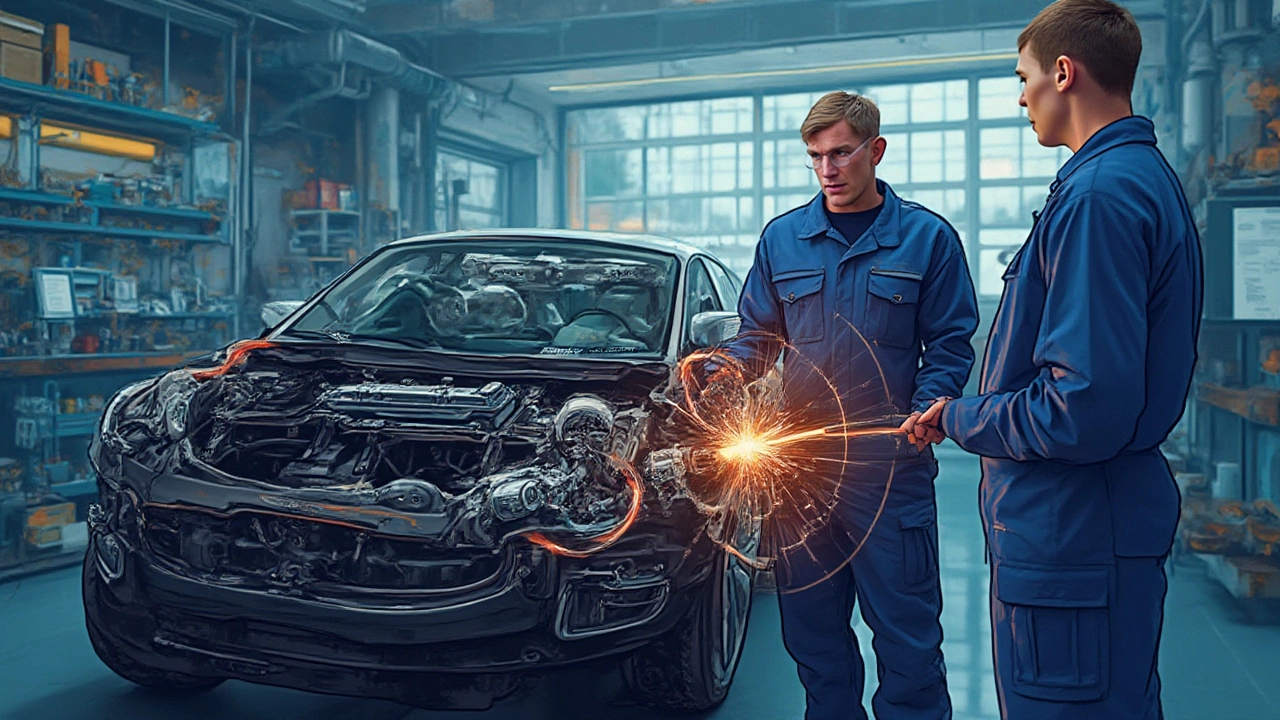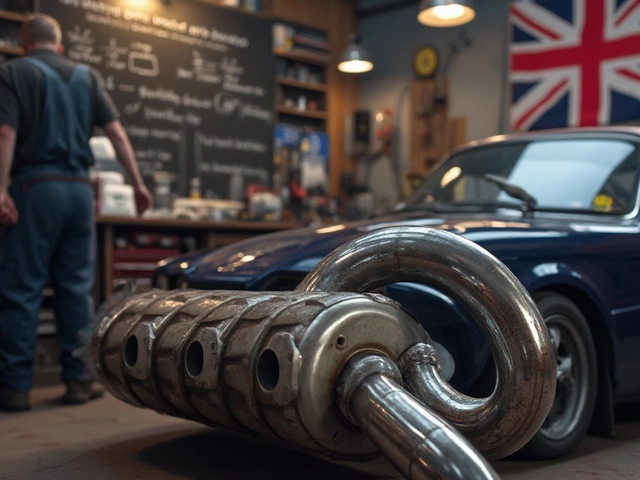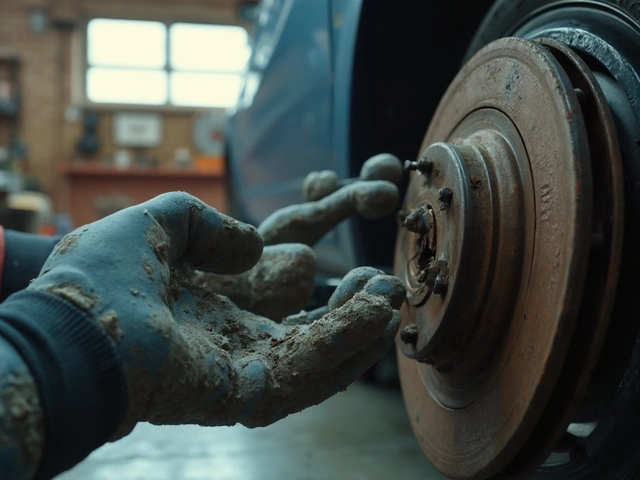You ever wonder what really happens under your hood when you turn the key? Ignore the metal, plastic, and all those wires for a moment. The real action—the first kick of life in your engine—comes from a tiny but crucial part: the spark plug. If you’ve got a gas-powered engine, you count on this little guy every time. But what if it’s missing? Does your car just give up, or is there a way it can keep going? Let’s settle this old garage debate by digging deep into what makes modern engines fire—or sputter out completely.
How Spark Plugs Work and Why They Matter
Look at a single spark plug, and it might not look like much. But its job is hero-level: it lights the fuel-air mix inside each cylinder at just the right moment. Every single pop of your engine—and every bit of horsepower on the road—starts with a spark plug doing this job, thousands of times each minute. If you’ve never seen one up close, here’s what’s happening: high-voltage electricity travels from the ignition coil and jumps a tiny gap in the plug, creating an electric spark. This spark is powerful enough (about 25,000 to 45,000 volts in modern cars) to ignite the compressed air and fuel mixture inside the combustion chamber. That explosion pushes the piston down, spinning your crankshaft, which ultimately turns your wheels.
Without this initial spark, your gasoline engine is just a lump of well-engineered metal. It can crank and whir, but it will never actually 'catch'—that is, run. If even one spark plug isn't firing properly, you might notice rough idling, sluggish acceleration, or even a check engine light blinking at you. Multiple dead plugs? Expect serious shaking, stalling, or no start at all.
Why so sensitive? Because modern engines rely on precise timing. That means each plug has to fire at the perfect split second for the explosion to help, not hinder, the engine’s smooth operation. Small changes—like a weak spark or dirty plug—can mean bigger problems, from wasted fuel to misfires that could damage your catalytic converter or engine internals over time.
Spark plugs also wear out differently depending on the metal used (copper, platinum, iridium) and your driving habits. Here’s a quick look:
| Type of Spark Plug | Average Lifespan (miles) | Material |
|---|---|---|
| Copper | 20,000 - 30,000 | Copper core, nickel alloy |
| Platinum | 60,000 - 100,000 | Platinum center electrode |
| Iridium | 80,000 - 120,000 | Iridium tip for longevity |
A lot of drivers ignore spark plugs until something goes wrong, but healthy plugs keep your car starting easily, running smoother, and even burning fuel more efficiently. It’s not just about the car starting—it’s about how well it performs and how long it lasts.

What Happens If a Car Runs Without Spark Plugs?
Now to the real question, and let’s make it plain: a standard gas-powered car simply cannot run with no spark plugs installed. No spark means no ignition, which means the air-fuel mix never explodes, so the pistons never move with power, and your engine just cranks but doesn't actually "run." However, let's break it down a bit more, because some folks think maybe modern tech or certain models can work around this.
If you remove one spark plug from a multi-cylinder engine, the car might limp along, but you'll feel rough running, engine vibration, and a major drop in power—it’s called "running on fewer cylinders." Constantly driving like this can flood your catalytic converter with fuel, which you don’t want: that can get hot enough to melt it inside. Remove them all, and it’s game over. The engine is dead, and you won’t be moving anywhere under your own power.
Some people wonder about old diesels, which use a different system altogether. Diesel engines ignite their fuel by compressing it until it gets so hot it burns—no spark required. So yes, a diesel engine can "run without spark plugs" because it was designed that way. But if you’re talking gas engines—whether old-school carbs or the latest direct-injection turbo setups—they all depend on spark plugs, full stop.
This is why you’ll never see a gasoline lawn mower, generator, or sports car that doesn’t have some kind of spark source. If you pull the plugs and try to start your car, you might notice the starter turning, but there’s just silence under the hood. No explosions, no forward motion, no fire. That’s it. Not even magic jump-starts or roadside tricks can fake a spark if none are present. If you’re ever stuck with a no-start and you know the battery’s good, always put "checking your spark plugs" near the top of the troubleshooting list.
And just because a car might technically "turn over," meaning the starter spins, doesn’t mean it’s running. For an engine to truly run, it must be burning fuel because of a deliberate spark—anything less is just wasted battery juice.
People risk damaging their engine or exhaust by running for too long with misfiring or dead plugs. Raw gasoline can build up in the engine or exhaust, which is both unsafe and expensive to fix. In the worst-case scenarios, this can lead to engine damage, ruined catalytic converters, or fire hazards. If you’re hearing consistent misfires, delayed starts, or see that pesky check engine light, these might be your car’s way of screaming "change my spark plugs!"

Engines That Run Differently: Diesel, Rotary, and Electric
So now you know your average gas car cannot run without spark plugs. But what about engines that play by their own rules? Diesel engines, for instance, run on a simple yet powerful trick: instead of using a spark, they compress air until it’s hot enough to ignite fuel injected straight into the cylinder. That’s why older diesels don’t need spark plugs—just heat, pressure, and fuel. Some diesels do have "glow plugs," but these simply preheat the combustion chamber to help with cold starts; once running, the engine doesn’t rely on them.
Another oddball: the Mazda rotary engine (think classic RX-7 or RX-8). These technically use spark plugs, but their combustion process is a bit unique. The way fuel burns inside a rotary engine is more like a constant spinning explosion rather than up-and-down pistons, but you still need a spark to get it ignited. So even in these weird engines, spark plugs are essential.
Now, let’s talk about electric cars. These are shaking up the industry for good reason—they just don’t need spark plugs at all, because there’s no fuel to ignite. Motors spin using electricity from your battery, not exploding gasoline. No explosions mean no combustion chamber, and that means zero spark plugs ever. That’s a big reason EV maintenance costs are way lower; when you hear someone bragging about no spark plug changes on their Tesla, that’s true. The only "plugs" in those cars are for charging.
Hydrogen fuel cell vehicles are another category. These use chemical reactions instead of burning fuel in the traditional sense, so there’s no need for spark plugs either. Same with hybrid cars—though most still have a regular gas engine, so you’ll still be changing out plugs unless your hybrid runs fully electric most of the time.
Here’s a quick-reference table for the big engine types and how they use (or don’t use) spark plugs:
| Engine Type | Uses Spark Plugs? | Reason |
|---|---|---|
| Gasoline (piston) | Yes | Ignite air-fuel mix |
| Diesel | No | Combustion from pressure/heat |
| Rotary (Mazda) | Yes | Unique combustion, still needs spark |
| Electric | No | No combustion, electric motor only |
| Hydrogen Fuel Cell | No | Chemical-electrical reaction, not combustion |
If you’re keeping an old classic on the road (hello, project car fans!), swapping spark plugs yourself is one of the best beginner jobs. Choose the right type for your engine, check the gap, and never overtighten—a plug that’s too tight is trouble. Modern spark plugs are designed to last longer, but checking them every 30,000 miles is a safe bet if you want peak performance.
In the end, the answer’s simple for most cars made after the Wright brothers to whatever is out this year: spark plugs are essential for gas-powered engines. The only exceptions? Diesels, electrics, and a few rare birds. For everything else, that tiny spark is the difference between a parked curb ornament and the thrill of the open road. Take a few minutes each year to check or change your plugs—you’ll be rewarded with a car that starts easier, runs smoother, and costs you less down the line.






